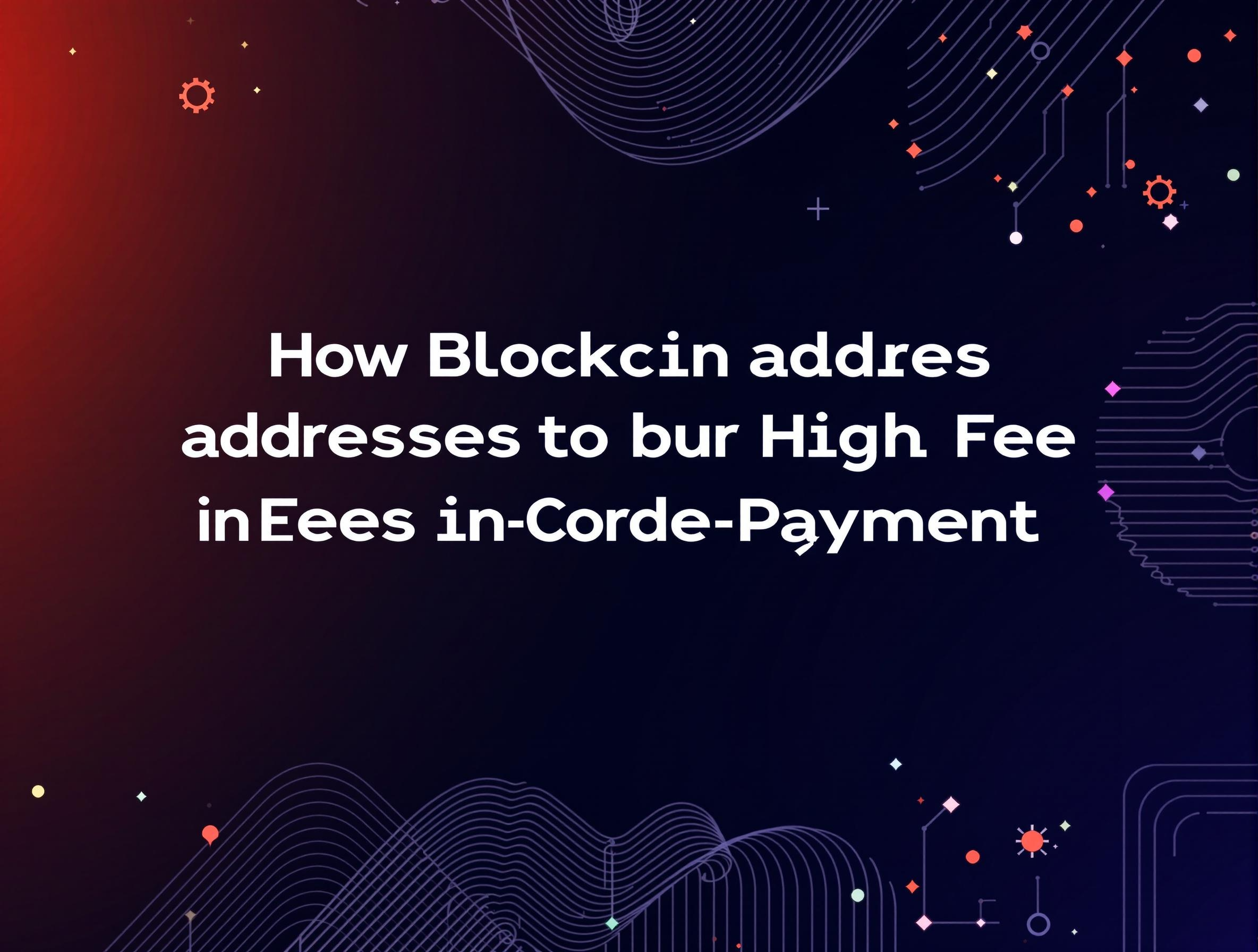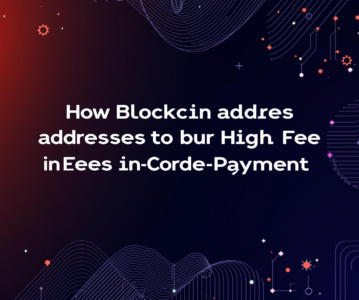Introduction
Cross-border payments—transactions where the payer and the recipient are based in different countries—are integral to global trade, remittances, and the modern financial ecosystem. However, these payments are notoriously expensive, slow, and opaque, often burdened by high fees that erode the value of transferred funds. According to the World Bank, the global average cost of sending $200 internationally was 6.18% in Q1 2023, with some corridors charging over 10%—a significant expense for individuals and businesses alike, especially in developing economies.
The high cost of cross-border payments isn’t just a financial inconvenience; it’s a barrier to economic inclusion, trade, and development. Small and medium-sized enterprises (SMEs) face profitability challenges when transacting internationally, while migrant workers lose a considerable portion of their remittances to fees. Reducing these costs is thus a priority for the global financial community. Blockchain technology, with its promise of disintermediation and efficiency, has emerged as a compelling solution. This article explores how blockchain addresses high fees in cross-border payments, evaluates its real-world applications, and forecasts its future impact on the financial industry.
Overview of Blockchain Technology
Blockchain is a decentralized, distributed ledger technology that records transactions in a secure, transparent, and immutable manner. Each transaction is grouped into a “block,” cryptographically linked to the previous block, forming a “chain” of records that is visible to all network participants. This structure ensures that transaction histories are tamper-resistant and verifiable without reliance on a single central authority.
In the financial sector, blockchain’s potential applications are vast. Beyond cryptocurrencies, blockchains can facilitate asset tokenization, streamline settlement processes, enable programmable money (via smart contracts), and enhance transparency and auditability. The most relevant application for cross-border payments is the ability to transfer value directly and securely between parties, minimizing the need for intermediaries. This not only speeds up transactions but also reduces operational complexities and costs.
Traditional Cross-Border Payment Processes and Pain Points
The Conventional Payment Rail
Traditional cross-border payments rely on a complex web of correspondent banks, international payment messaging systems (like SWIFT), and various clearing and settlement mechanisms. When an individual or business initiates a cross-border payment, the transaction typically passes through multiple intermediary banks before reaching the beneficiary’s account. Each institution performs anti-money laundering (AML) and know-your-customer (KYC) checks, currency conversions, and other compliance processes.
This multi-layered system is slow and expensive. Settlement times can range from 1 to 5 business days, depending on the countries and currencies involved. Each intermediary deducts service fees, foreign exchange margins, and processing charges, cumulatively inflating the total cost. A 2022 report by the Bank for International Settlements (BIS) highlighted that fees can be especially burdensome in remittance corridors involving emerging markets.
Pain Points and Data
Several pain points define the traditional model:
- High Fees: As mentioned, the global average is over 6%, but in some Sub-Saharan African corridors, it can exceed 10%. For example, sending money from South Africa to Botswana averaged 13% in 2022.
- Lack of Transparency: Senders often do not know the exact fees or exchange rates upfront. Hidden charges may emerge, and recipients sometimes receive less than expected.
- Slow Settlement: End-to-end transaction times can be unpredictable, particularly when involving smaller banks or less common currency pairs.
- Limited Accessibility: Many people in developing regions lack access to traditional banking infrastructure, further complicating cross-border transfers.
These inefficiencies stifle global economic activity, limit financial inclusion, and prompt calls for innovation.
How Blockchain Reduces Cross-Border Payment Fees
Technical Advantages of Blockchain
Blockchain’s architecture directly addresses many of the pain points associated with traditional cross-border payments. Its key advantages include:
- Decentralization: Transactions occur directly between sender and recipient on a peer-to-peer network, eliminating the need for multiple correspondent banks.
- Transparency: All transactions are recorded on a public or consortium ledger, allowing for real-time traceability and reconciliation.
- Programmability: Smart contracts automate compliance checks and settlement, further reducing manual intervention and associated costs.
- 24/7 Availability: Unlike traditional banks, blockchain networks operate around the clock, enabling instant or near-instant settlements.
By streamlining the payment process and removing intermediaries, blockchain significantly reduces the operational and compliance costs that drive up cross-border fees.
Real-World Examples and Data
Ripple
Ripple is a prominent example of a blockchain-based cross-border payment network. Using its digital asset XRP and the RippleNet network, Ripple enables financial institutions to process payments globally in seconds, with end-to-end transparency and significantly lower costs.
- Cost Reduction: According to Ripple’s 2020 white paper, financial institutions using RippleNet have reported savings of 40-60% in cross-border transaction fees compared to traditional rails.
- Speed: Settlement times are reduced from days to seconds or minutes.
- Adoption: RippleNet counts over 300 financial institutions as partners, including Santander and Standard Chartered.
Stellar
Stellar is an open-source blockchain designed specifically for cross-border payments and remittances. Its protocol enables the issuance, transfer, and settlement of digital representations of any currency.
- Case Study: In 2021, MoneyGram partnered with Stellar to facilitate instant USDC-based (stablecoin) remittances. This allowed users to send and receive funds at a fraction of the typical cost—often under 1% of the transfer amount.
- Speed and Accessibility: Transfers on Stellar settle in 2-5 seconds, and its open architecture supports integrations with mobile money providers, expanding reach in underserved markets.
Supporting Data
A 2021 McKinsey report noted that blockchain-based solutions, when scaled, can reduce cross-border transaction costs by up to 80% compared to the traditional model. The savings arise from reduced intermediary fees, lower operational costs, and minimized currency conversion spreads.
Current Applications and Challenges
Existing Blockchain-Based Cross-Border Payment Cases
Blockchain is no longer merely experimental in cross-border payments. Major financial institutions, fintechs, and even central banks are piloting or implementing blockchain-based solutions.
- JPMorgan’s Liink: Part of the Onyx platform, Liink is a blockchain-based network facilitating information exchange and payment settlement between over 400 banks globally.
- IBM World Wire: Built on Stellar, this initiative connects financial institutions for seamless cross-border payments using stablecoins and digital assets.
- Central Bank Digital Currencies (CBDCs): Projects such as mBridge (involving the central banks of China, Thailand, UAE, and Hong Kong) are experimenting with cross-border CBDC settlements on blockchain infrastructure, aiming for real-time, low-cost transfers.
Major Challenges
Despite notable progress, several significant hurdles remain:
- Regulatory and Compliance Risks: Blockchain payments can create challenges around AML, KYC, and sanctions compliance, especially in permissionless networks.
- Interoperability: Fragmentation among blockchains and legacy systems impedes seamless integration and adoption.
- Scalability and Throughput: While blockchains like Ripple and Stellar are optimized for payments, others (e.g., Bitcoin, Ethereum) face throughput constraints that limit practical use in high-volume corridors.
- Volatility: Use of cryptocurrencies as bridge assets can introduce forex risk unless stablecoins or CBDCs are utilized.
- User Experience and Education: Adopting new technologies requires user trust, intuitive interfaces, and integration with existing financial services.
For widespread adoption, industry stakeholders must address these challenges through collaboration, technological innovation, and regulatory clarity.
Future Trends and Outlook
Technological and Industry Developments
Several trends suggest a promising future for blockchain in cross-border payments:
- CBDC Interoperability: With over 100 countries exploring or piloting CBDCs, cross-border settlement infrastructure is likely to evolve rapidly. Projects like the Bank for International Settlements’ (BIS) Project Dunbar are testing multi-CBDC platforms for seamless interbank payments.
- Tokenization of Fiat Currencies: Stablecoins pegged to fiat currencies (e.g., USDC, EURC) are becoming mainstream, offering near-instant, low-cost cross-border transfers without the volatility of cryptocurrencies.
- Improved Network Interoperability: Protocols such as the Interledger Protocol (ILP) and blockchain bridges are enhancing cross-network compatibility, allowing assets and messages to flow across diverse blockchains and traditional systems.
- Embedded Finance and API Integration: Blockchain payment solutions are being embedded directly into e-commerce, supply chain, and B2B platforms, simplifying global trade and reducing administrative overhead.
Potential Innovations and Industry Impact
Looking ahead, the integration of artificial intelligence (AI) and blockchain could further automate compliance, fraud detection, and risk management, driving down costs. Decentralized finance (DeFi) platforms are also exploring cross-border lending and liquidity provision, which could reshape international finance.
Moreover, as regulatory frameworks mature, we may see the emergence of public-private consortiums that combine the transparency and efficiency of blockchain with the compliance and oversight required by regulators. This could unlock new corridors, reduce costs further, and enhance global economic participation.
Conclusion
High fees in cross-border payments remain a critical challenge, impeding economic growth and financial inclusion worldwide. Traditional payment rails, built on layers of intermediaries, are slow, expensive, and opaque. Blockchain technology offers a fundamentally different approach—one that removes intermediaries, increases transparency, and automates key processes.
Real-world implementations, such as Ripple and Stellar, demonstrate that blockchain can reduce fees by up to 80%, settle payments in seconds, and significantly improve user experience. However, challenges around regulation, interoperability, and user adoption must be addressed for the technology to achieve its full potential.
As CBDCs, stablecoins, and interoperable blockchain networks mature, and as regulatory clarity emerges, blockchain is poised to transform cross-border payments. The likely outcome is a future in which sending money internationally is as fast, cheap, and easy as sending an email—unlocking new opportunities for individuals, businesses, and economies worldwide.
Summary and Analysis of Future Trends
In summary, blockchain is reshaping the landscape of cross-border payments by offering a low-cost, high-speed, and transparent alternative to legacy financial infrastructure. The most successful use cases leverage blockchain’s ability to eliminate intermediaries and automate settlement, producing significant fee reductions for both individuals and businesses.
Future trends indicate further integration of blockchain with national payment systems, the rise of CBDCs and stablecoins for international settlement, and ongoing innovation in interoperability and compliance. As these technologies mature, and as regulatory environments adapt, the industry could witness a dramatic reduction in fees, broader financial inclusion, and new models for global commerce.
For fintech practitioners and enthusiasts, staying informed about these trends—and the evolving regulatory landscape—is crucial. Those who can effectively harness blockchain’s potential will be well-positioned to lead the next wave of innovation in global payments.
References:
- World Bank Remittance Prices Worldwide Database (2023)
- Bank for International Settlements (BIS) Quarterly Review (2022)
- McKinsey & Company: “The Future of Cross-Border Payments” (2021)
- Ripple: “The Case for Digital Assets in Cross-Border Payments” (2020)
- Stellar Development Foundation: “2021 Annual Report”
- Bank for International Settlements: “Project Dunbar” (2022)
- IBM Blockchain World Wire and MoneyGram Press Releases


Cryptocurrency industry insights